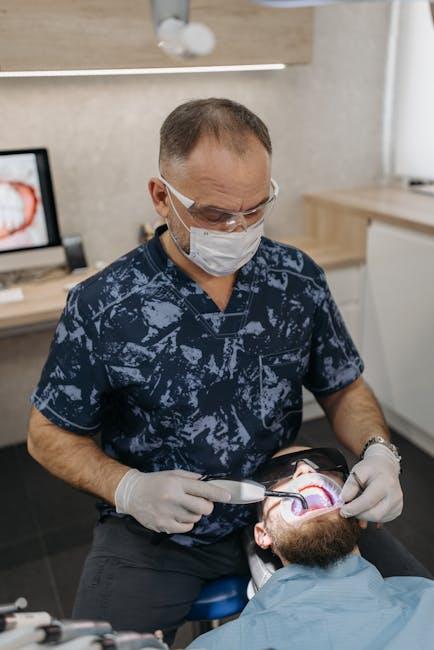
Dental Insurance Market Size & Outlook, 2025-2033 – UnivDatos
The dental insurance market continues to evolve rapidly owing to heightened awareness of oral health, rising dental care costs, and increasing adoption of preventive dental services. According to UnivDatos Insights, the Dental Insurance Market is poised for significant growth from 2025 through 2033. This article delves deep into the market size, growth drivers, industry challenges, and future outlook to empower stakeholders and consumers alike with valuable insights.
Market Overview: Dental Insurance Industry at a Glance
Dental insurance refers to health insurance policies that cover partial or complete costs of dental care. This market is witnessing a surge as consumers increasingly prioritize oral hygiene aligned with improving overall health. The market size for dental insurance is expected to expand substantially in the coming years.
| Parameter | Value |
|---|---|
| Global Market Size (2024) | USD 33.2 billion |
| Expected CAGR (2025-2033) | 6.9% |
| Key Regions | North America, Europe, Asia Pacific |
| Major Players | Delta Dental, Cigna, MetLife, Aetna |
| Primary Coverage | Preventive, Basic, Major Dental Services |
Key Drivers Influencing the Dental Insurance Market Growth
The growth of dental insurance is being propelled by various well-defined factors including demographic shifts, rising health consciousness, and technological advancements.
- Increasing Oral Health Awareness: Government initiatives and dental health campaigns have improved public understanding about oral hygiene benefits, boosting insurance uptake.
- Rising Cost of Dental Treatments: The expense for advanced dental procedures often necessitates insurance protection for consumers.
- Technological Innovations: Digital dentistry and tele-dentistry platforms are facilitating better access and efficient service delivery.
- Growing Geriatric Population: Older adults tend to require more frequent dental visits, increasing demand for insurance coverage.
- Employer-Sponsored Plans: Many organizations are now including dental insurance as part of employee benefit packages.
Market Segmentation
Understanding segmentation is vital for market players aiming to capitalize on emerging opportunities in dental insurance. Below is a quick breakdown:
By Type of Plan
- Indemnity Dental Plans
- Preferred Provider Organization (PPO)
- Dental Health Maintenance Organization (DHMO)
By Coverage
- Preventive Services (e.g., cleaning, X-rays)
- Basic Restorative Services (e.g., fillings, root canals)
- Major Restorative Services (e.g., crowns, bridges, implants)
By End-User
- Individual/Family
- Employers
- Government Programs
Regional Outlook: Where Growth Is Concentrated
While North America presently dominates the market due to established healthcare infrastructure and high insurance penetration, the Asia Pacific and European markets have rapidly growing potential. Key regional trends include:
- North America: The U.S. leads with rising employer-sponsored dental insurance and government programs expanding coverage.
- Europe: Increasing government subsidies and consumer awareness in countries like Germany, UK, and France fuel growth.
- Asia Pacific: Dynamic economies like China and India are witnessing gradual adoption due to rising middle-class demand and expanding private insurance.
Challenges Facing the Dental Insurance Market
Despite promising growth, several challenges could impede the dental insurance market expansion, including:
- High Premium Costs: Premiums can be cost-prohibitive for lower-income populations limiting wider access.
- Limited Coverage for Cosmetic Procedures: Most plans exclude aesthetic dental treatments, restricting the consumer base.
- Complex Policy Structures: Difficulties in understanding plan benefits often cause customer hesitancy.
- Regulatory Variations: Diverse regional policies and insurance regulations complicate market entry approaches.
Benefits of Having Dental Insurance
Opting for dental insurance brings several practical benefits that improve both oral health outcomes and financial protection.
- Cost Savings: Insurance helps mitigate the high costs of complex dental procedures.
- Encourages Preventive Care: Regular cleanings and checkups are often covered, reducing oral disease risks long-term.
- Access to Network Providers: Insured patients gain access to vetted, quality dental professionals under network benefits.
- Peace of Mind: Insurance reduces anxiety related to unexpected dental emergencies and associated expenses.
Practical Tips for Choosing the Right Dental Insurance
Selecting the most suitable dental insurance plan can be overwhelming given the multiple options available. Consider these expert tips:
- Evaluate Coverage Needs: Assess your typical dental care requirements including regular, restorative, and emergency treatments.
- Compare Plan Types: Understand the differences between PPO, DHMO, and indemnity plans to select what fits your lifestyle.
- Check Network Providers: Confirm that your preferred dentists are included in the plan’s network.
- Understand Cost Structures: Review premiums, deductibles, copayments, and annual maximums carefully.
- Look for Added Benefits: Some plans offer perks such as orthodontic coverage and teeth whitening at discounted rates.
Case Study: Impact of Dental Insurance on Preventive Care Uptake
A recent study by UnivDatos highlighted the link between dental insurance and preventive care engagement. Participants with dental insurance were 40% more likely to visit a dentist annually and 30% less likely to experience advanced tooth decay compared to uninsured counterparts. This demonstrates how insurance coverage promotes healthier habits and reduces expensive emergency treatments.
Future Outlook and Trends (2025-2033)
The dental insurance market is anticipated to register strong growth with the help of technological integration and evolving consumer preferences. Some emerging trends include:
- Digital Insurance Platforms: Insurers are leveraging AI, mobile apps, and tele-dentistry for seamless customer experiences.
- Customized Insurance Packages: More flexible plans tailoring coverage to unique consumer needs will gain traction.
- Integration with Overall Health Plans: Bundled policies combining dental with medical coverage will become more popular.
- Focus on Wellness & Preventive Programs: Insurers will provide incentives for regular oral hygiene and healthy habits.
Conclusion
The Dental Insurance Market, as analyzed by UnivDatos from 2025 to 2033, presents compelling opportunities driven by rising oral health consciousness, technological advances, and expanding government initiatives. Despite challenges like cost and complex policy frameworks, the sector is projected to experience sustained growth globally, especially in North America and Asia Pacific regions.
For consumers and businesses alike, staying informed about market trends and practical insurance tips is paramount to making beneficial dental insurance choices. Investing in the right dental coverage today ensures not only better oral health but also financial security against unforeseen dental expenses in the future.


